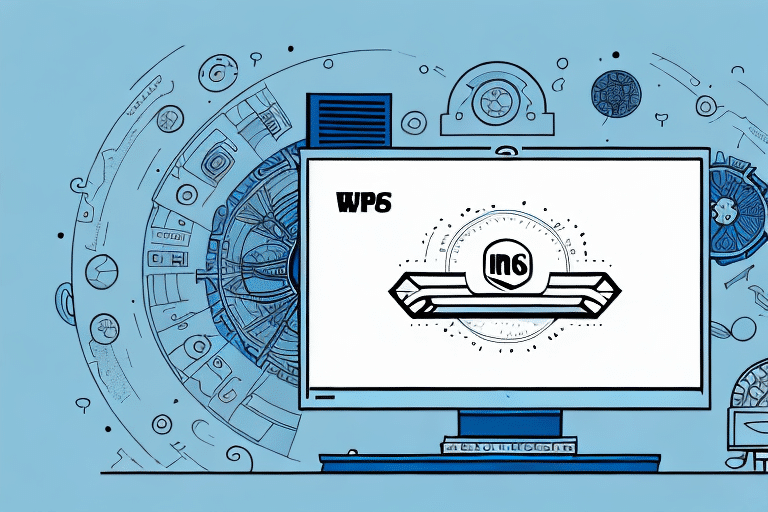Importance of Backups in UPS Worldship
UPS Worldship is a critical tool for businesses managing shipping operations. Ensuring the integrity and availability of shipping data is paramount to maintaining smooth operations and customer satisfaction. Implementing a reliable backup system mitigates the risks associated with data loss, system failures, and cyber threats.
Protecting Critical Shipping Data
Daily operations involve entering a vast amount of data, including shipping addresses, tracking numbers, and product information. According to a study by IBM Security, the average cost of a data breach in 2023 was $4.45 million. Regular backups ensure that this critical data can be restored quickly, minimizing downtime and operational disruptions.
Compliance with Legal and Regulatory Standards
Many industries are subject to regulations that mandate the retention of shipping and transactional data for specified periods. For example, the FDA requires accurate record-keeping to ensure product safety and traceability. Regular backups help businesses comply with these legal requirements, avoiding potential fines and legal repercussions.
Recovery from Human Errors
Human errors, such as accidental deletions or incorrect data entries, can lead to significant data loss. A robust backup system allows for the restoration of accurate data, reducing the time and resources needed to rectify these mistakes.
Understanding UPS Worldship Backup and Restore Process
Grasping the intricacies of the UPS Worldship backup and restore process is essential for effective data management. This involves creating comprehensive copies of your Worldship database and configuration files, ensuring that all critical information is safeguarded.
Components of the Backup Process
- Database Backup: Captures all transactional data, including shipments, customer information, and tracking details.
- Configuration Files: Stores system settings, user preferences, and application configurations necessary for Worldship to function correctly.
Backup Frequency and Scheduling
The frequency of backups should align with the volume of data processed and the criticality of the information. High-volume operations may necessitate daily backups, while others might opt for weekly or bi-weekly schedules. Automating backups can help maintain consistency and reduce the risk of human oversight.
Testing Backup Integrity
Regularly testing backup files by performing trial restorations ensures that the data can be successfully retrieved when needed. This proactive approach identifies potential issues early, allowing businesses to address them before an actual data loss event occurs.
Creating and Managing Backups in UPS Worldship
Establishing a systematic approach to creating and managing backups is vital for data integrity and availability.
Step-by-Step Guide to Backup Data
- Open UPS Worldship and navigate to the Tools menu.
- Select Import/Export Data.
- Click on Export and choose the specific data sets you wish to back up.
- Select a secure storage location for the backup file and initiate the export process.
- Monitor the process until completion, ensuring that the backup file is successfully created.
It is recommended to perform backups at least weekly or before implementing any significant updates to the system.
Types of Backup Methods
- Full Backup: Captures all data within the system, providing a complete copy of the database and configuration files.
- Incremental Backup: Only backs up data that has changed since the last backup, reducing storage requirements and backup time.
- Differential Backup: Backs up all changes made since the last full backup, offering a balance between backup speed and data comprehensiveness.
Choosing the appropriate backup method depends on the specific needs of the business, including data volume and acceptable recovery time objectives.
Developing a Robust Backup Strategy
A comprehensive backup strategy should encompass the following elements:
- Backup Frequency: Determine how often backups should occur based on data volatility and business requirements.
- Backup Storage: Use secure and redundant storage solutions, such as external hard drives or cloud-based storage services, to protect against hardware failures.
- Automatic Backups: Utilize automation tools to schedule backups, ensuring consistency and reducing manual intervention.
- Regular Testing: Periodically test backup files by performing restorations to verify data integrity and functionality.
- Software Updates: Keep backup software up to date to leverage the latest security features and improvements.
Restoring Data: Step-by-Step Guide
In the event of data loss or corruption, restoring data from backups is crucial to resume normal business operations.
Procedure to Restore a Backup
- Launch UPS Worldship and access the Tools menu.
- Select Import/Export Data.
- Choose Import and locate the desired backup file.
- Select the specific data sets you wish to restore and initiate the import process.
- Allow the system to complete the restoration, ensuring all data is accurately retrieved.
Before performing a restoration, it is advisable to create a backup of the current system state to prevent unintended data loss.
Verifying Restored Data
After restoration, it is essential to verify the accuracy and completeness of the data. This involves:
- Reviewing shipping addresses and tracking numbers for correctness.
- Running test shipments to ensure that the system functions as expected.
- Comparing restored data against original records to identify any discrepancies.
Troubleshooting Common Backup and Restore Issues
Even with a solid backup strategy, challenges may arise during the backup or restoration processes. Addressing these issues promptly ensures the reliability of your data management system.
System Compatibility Issues
Software updates or changes in the operating environment may lead to compatibility issues with backup files. Ensuring that both UPS Worldship and backup software are regularly updated can mitigate these risks.
Corrupted Backup Files
Backup files can become corrupted due to incomplete transfers or storage media failures. Implementing verification steps post-backup and using reliable storage solutions can reduce the likelihood of corruption.
Insufficient Storage Space
Running out of storage space can cause backup failures and data loss. Monitoring storage usage and expanding storage capacity when necessary ensures that backups can be completed successfully.
Resolution Strategies
When encountering backup or restoration issues, consider the following steps:
- Consult the UPS Worldship Support Center for guidance.
- Verify that all software and system requirements are met.
- Ensure that storage locations have adequate space and are functioning correctly.
- Seek assistance from IT professionals or UPS technical support for complex issues.
Automating and Securing Backups in UPS Worldship
Automation and security are integral components of an effective backup strategy, enhancing both efficiency and data protection.
Automating Backup Processes
Automating backups reduces the risk of human error and ensures that backups occur consistently. Utilizing third-party tools or built-in scheduling features within UPS Worldship can streamline the backup process.
For example, cloud-based solutions like AWS Backup offer automation capabilities, enabling businesses to schedule regular backups without manual intervention.
Securing Backups Against Cyber Threats
Protecting backup data from cyber threats is crucial to maintaining data integrity and confidentiality. Implement the following security measures:
- Encryption: Encrypt backup files using strong encryption standards to prevent unauthorized access.
- Secure Storage: Store backups in locations that are physically secure and isolated from primary data sources.
- Access Controls: Implement strict access controls to ensure that only authorized personnel can access backup files.
- Regular Updates: Keep backup software and security protocols up to date to defend against emerging threats.
According to the CSO Online, encryption is one of the most effective methods to safeguard sensitive information against data breaches and cyber attacks.
Conclusion: Ensuring Business Continuity with Reliable Backups in UPS Worldship
Establishing a robust backup and restore strategy in UPS Worldship is essential for maintaining uninterrupted business operations. By understanding the backup process, implementing best practices, and leveraging automation and security measures, businesses can protect their critical shipping data from unexpected disruptions.
Regularly reviewing and updating backup strategies ensures that they evolve with changing business needs and emerging threats. Investing in reliable backup solutions not only safeguards valuable data but also enhances overall operational resilience, contributing to sustained business success.






















